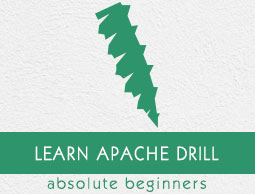
- Apache Drill - Home
- Apache Drill - Introduction
- Apache Drill - Fundamentals
- Apache Drill - Architecture
- Apache Drill - Installation
- Apache Drill - SQL Operations
- Apache Drill - Query using JSON
- Window Functions using JSON
- Querying Complex Data
- Data Definition Statements
- Apache Drill - Querying Data
- Querying Data using HBase
- Querying Data using Hive
- Apache Drill - Querying Parquet Files
- Apache Drill - JDBC Interface
- Apache Drill - Custom Function
- Apache Drill - Contributors
Apache Drill - JDBC Interface
Apache Drill provides JDBC interface to connect and execute queries. We can use JDBC interface in JDBC based SQL Client like SquirreL SQL Client and work on all the features of drill. We can use the same JDBC interface to connect drill from our Java based application. Let us see how to connect drill and execute commands in our sample Java application using JDBC interface in this section.
Java Application
Apache Drill provides a JDBC driver as a single jar file and it is available @ /path/to/drill/jars/jdbc-driver/drill-jdbc-all-1.6.0.jar. The connection string to connect the drill is of the following format −
jdbc:drill:zk = <zk_host>:<zk_port> jdbc:drill:zk = <zk_host>:<zk_port>/<zk_drill_path>/<zk_drillbit_name jdbc:drill:zk = <zk_host>:<zk_port>/<zk_drill_path>/<zk_drillbit_name;schema = hive
Considering ZooKeeper is installed in the local system, the port configured is 2181, the drill path is drill and drillbit name is drillbits1, the connection string may be among the following commands.
jdbc:drill:zk = localhost:2181 jdbc:drill:zk = localhost:2181/drill/dillbits1 jdbc:drill:zk = localhost:2181/drill/dillbits1;schema = hive
if the drill is installed in a distributed mode, we can replace the localhost with the list of drill installed system IP/name as shown in the following command.
jdbc:drill:zk = 1.2.3.4:2181,5.6.7.8:2181/drill/dillbits1;schema = hive
The connection to drill is just like any other JDBC interface. Now, create a new maven project with "com.tutorialspoint.drill.samples" as the package name and connect-drill as the application name.
Then, update the following code in App.java file. The coding is simple and self-explanatory. The query used in the application is the default JSON file packaged into drill.
Coding
package com.tutorialspoint.drill.samples;
import java.sql.*;
import java.lang.*;
public class App{
public static void main( String[] args ) throws SQLException, ClassNotFoundException{
// load the JDBC driver
Class.forName("org.apache.drill.jdbc.Driver");
// Connect the drill using zookeeper drill path
Connection connection = DriverManager.getConnection("jdbc:drill:zk = localhost:2181/drill/drillbits1");
// Query drill
Statement st = connection.createStatement();
ResultSet rs = st.executeQuery("SELECT * from cp.`employee.json` LIMIT 3");
// Fetch and show the result
while(rs.next()){
System.out.println("Name: " + rs.getString(2));
}
}
}
Now add following drill dependency tag to pom.xml file.
<dependency> <groupId>org.apache.drill.exec</groupId> <artifactId>drill-jdbc-all</artifactId> <version>1.1.0</version> </dependency>
Now, you can compile the application by using the following command.
mvn clean package
Once the application is compiled, execute it using the following command.
java -cp target/connect-drill-1.0.jar:/path/to/apache-drill-1.6.0/jars/ jdbc-driver/drill-jdbc-all-1.6.0.jar com.tutorialspoint.drill.samples.App
The output of this application list is the name of the first three employees available in employee.json file and it will show in the console as shown in the following program.
Result
Name: Sheri Nowmer Name: Derrick Whelply Name: Michael Spence